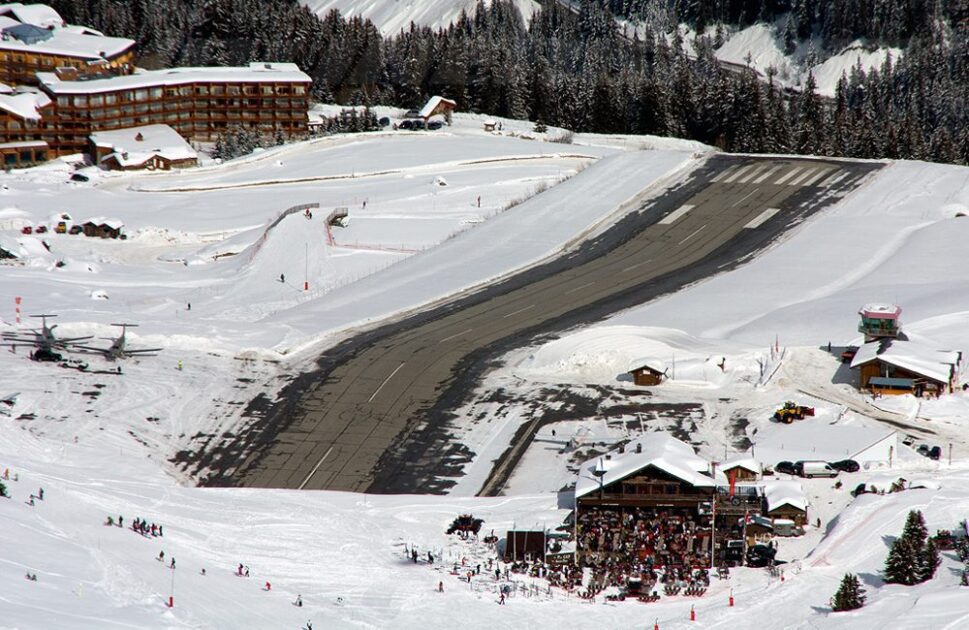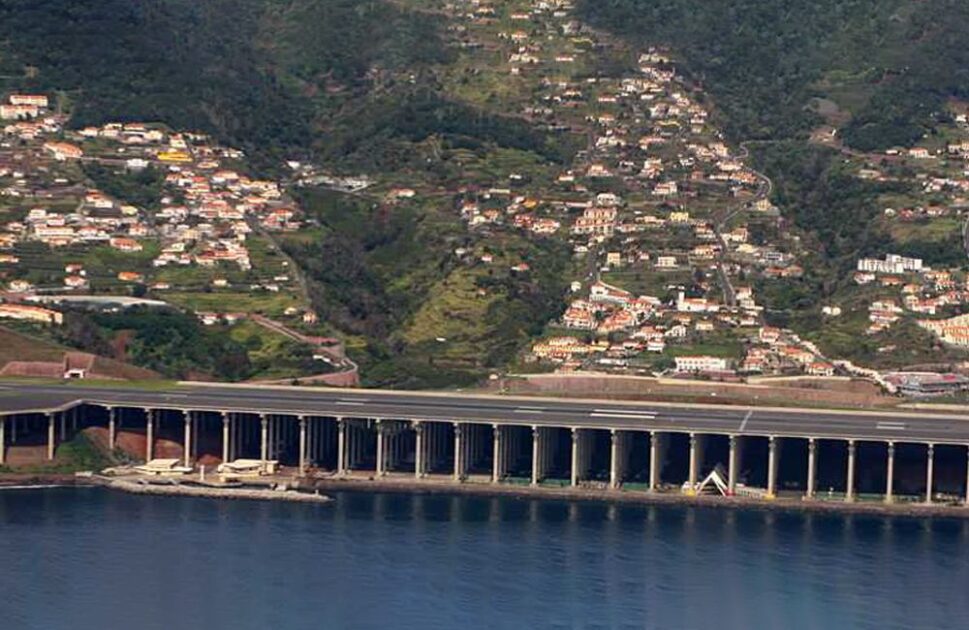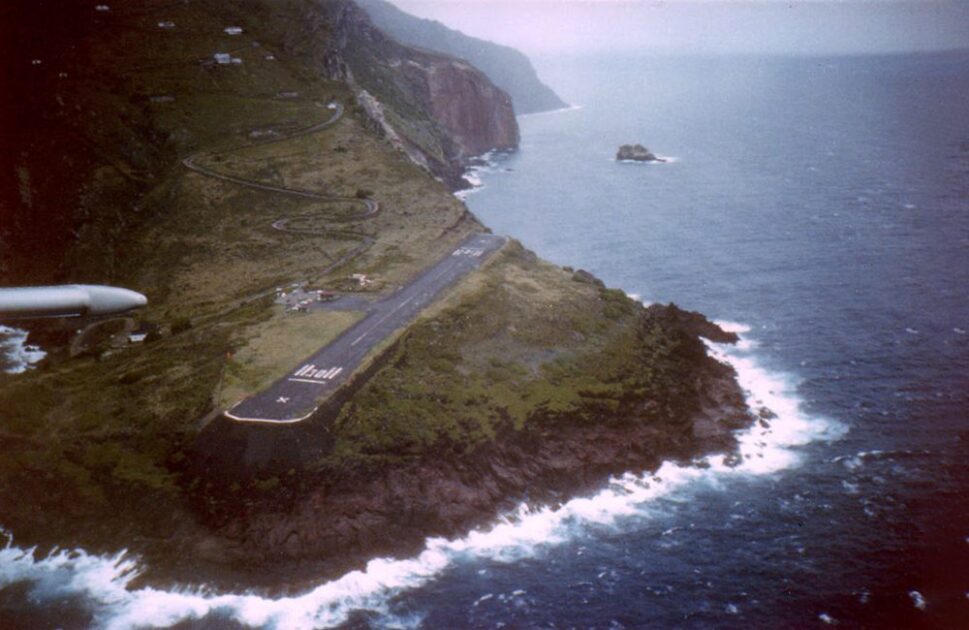Challenging Boundaries: Uncover the World’s Most Daring Airports

Traveling can be stressful, no matter who you are. Whether it’s a business trip, leisure getaway, or any other reason, there’s always a checklist of tasks to complete before you can board a flight. Most of these tasks, such as packing or catching connections, can be exhausting.
But here’s something to ponder: sometimes, the airport itself presents a challenge, especially for those who work in them. Even the most seasoned pilots have encountered difficulties taking off from the runways of some airports on this list. This compilation features the world’s most daunting airports, with hazards ranging from too-short runways to major construction flaws.
1. Shimla Airport – India | Aeroporto de Shimla – Índia
Year of construction:
1987 Risk factors: Dimensions, location
This regional airport is as small as it is perilous. Right from the outset, the airport flouts several safety regulations required for its operation. One of these concerns the runway length, which falls short by 300 meters compared to the minimum requirement by law.

In the past, plans were drawn up for its expansion, but the airport is surrounded by private lands and forests that hinder any expansion of its facilities. Additionally, Shimla Airport is situated at a high altitude, limiting aircraft to carrying a maximum of 28 passengers per trip.
2. Courchevel Altiport – France
Year of construction: 1962
Risk factors: Runway location
This airport, nestled in the heart of the French Alps, serves as the gateway to the Courchevel ski resort. Situated at an altitude of over 2,000 meters, its runway spans a mere 500 meters. The curved runway makes it challenging for pilots to execute last-minute maneuvers, which are occasionally necessary.

Furthermore, Courchevel Altiport lacks proper lighting, making landings considerably challenging on cloudy, rainy, or snowy days. To compound matters, it is nestled amidst the mountains, posing additional challenges for aircraft attempting to land there.
3. Barra Airport – Scotland
Year of construction: 1936
Risk factors: Beach runway

Situated north of the Isle of Barra, this airport is the only one in the world where planes take off and land on the beach. This unique setup means that all airport operations are greatly influenced by the tide.
The beach serving as the runway is open to the public, so it’s advisable to check if the airport is operational before planning a visit. Additionally, the airport’s beach is a popular spot for seals, and airport staff often have to escort the seals back to the sea to prevent accidents.
4. Princess Juliana International Airport – St. Martin
Year of construction: 1942
Risk factors: Proximity of airplanes
This bustling airport has a peculiar feature: airplanes soar less than 25 meters above the beach. In fact, the aircraft come so close to the ground that local authorities have issued warnings to tourists, urging them to maintain a safe distance during takeoffs and landings.

This precaution is to prevent the possibility of a curious onlooker being thrown into the sea or sucked into a jet engine. Throughout its years of operation, the airport has been the scene of at least four accidents with devastating consequences.
5. Malé International Airport – Maldives
Year of construction: 1960
Risk factors: Runway size
The airport in the Maldives, situated on the island of Hulhule, faces a significant challenge due to the size of its runway, which, despite being small, stretches the entire length of the island. Any miscalculation could potentially lead the plane into the sea.

Another unique aspect of this bustling airport is that, after landing, passengers often need to take boats to reach their final destinations in the Maldives; otherwise, they might find themselves stranded, waiting for hours.
6. Kai Tak International Airport – Hong Kong
Year of construction: 1925
Risk factors: Surrounded by buildings
Landing at Kai Tak International Airport is a formidable challenge even for seasoned pilots. The airport is enveloped by towering skyscrapers, and airplanes pass so close to these buildings that passengers can catch glimpses inside offices. To compound the challenge, the runway was constructed over the sea and is excessively short and narrow.

It’s not hard to understand why passengers fondly referred to this airport as the “Heart Attack Airport.” Kai Tak was the backdrop for at least fifteen accidents before its closure in 1998 due to its extreme danger.
7. Madeira Airport, Portugal
Year of construction: 1973
Risk factors: Runway built over the sea
Some say Madeira Airport (also known as Cristiano Ronaldo Airport) is an engineering marvel, while others view it as a potential threat. The island of Madeira is so small that the airport’s runway had to be expanded outwards over the sea, supported by 180 pillars.

The strong winds on the island, combined with its narrow runway, make the maneuvers required for landing considerably more complex. In fact, pilots need specialized training to land or take off from Madeira Island.
8. Congonhas Airport – São Paulo
Year of construction: 1936
Risk factors: Proximity of airplanes
The primary challenge with Congonhas Airport is its location in a residential area close to downtown São Paulo, surrounded by buildings. This necessitates pilots to exercise extreme caution during takeoffs and landings.

Adding to the complexity, its runway is considered one of the slipperiest in the world due to inefficient drainage systems in the vicinity. Unfortunately, this airport has been the site of numerous accidents, including a significant one in 2007, prompting authorities to decide on runway expansion measures to prevent further tragedies.
9. Juancho E. Yrausquin Airport – Saba Island
Year of construction: 1963
Risk factors: World’s shortest runway
This airport holds the reputation of being the most perilous in the world, primarily due to its runway being the shortest on the planet, measuring a mere 400 meters! Besides the challenge posed by its limited length, the airport also sits on the edge of a cliff.

This means that any miscalculation can lead the aircraft into the sea or onto the rocks below the cliff. Consequently, jets are unable to take off or land at this airport. Smaller aircraft, however, can utilize the facilities with relatively fewer difficulties.
10. Gibraltar Airport – United Kingdom
Year of construction: 1939
Risk factors: Runway crosses a road
Gibraltar Airport is considered one of Europe’s most dangerous airports, second only to Madeira. The reason? It’s the only airport in the world where its runway intersects a road, at the same level! This unique setup was necessary due to the airport’s limited construction space.

So, when airplanes are in close proximity, road traffic is halted to allow aircraft movement. This means that any traffic accidents can impact takeoffs and landings. At this airport, what was gained in space was compromised in terms of safety.





